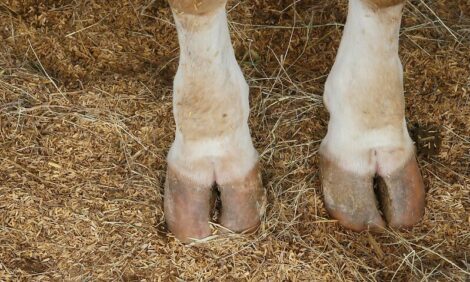



Researchers show vaccine protects cattle from bovine tuberculosis
The vaccine significantly reduces infectiousnessBovine tuberculosis (TB) is a livestock disease that results in large economic losses to animal agriculture worldwide. The disease can also transmit to humans and cause severe illness and death. Researchers from Penn State, Addis Ababa University and the University of Cambridge have now demonstrated that a vaccine for TB currently used in humans significantly reduces infectiousness of vaccinated livestock, improving prospects for elimination and control, according to a press release from PennState. The study published March 28 in the journal Science.
The spillover of infection from livestock has been estimated to account for about 10% of human tuberculosis cases. While such zoonotic TB (zTB) infections are most commonly associated with gastrointestinal infections related to drinking contaminated milk, zTB can also cause chronic lung infections in humans. Lung disease caused by zTB can be indistinguishable from regular tuberculosis but is more difficult to treat due to natural antibiotic resistance in the cattle bacteria.
“For over a hundred years, programs to eliminate bovine tuberculosis have relied on intensive testing and slaughtering of infected animals,” said Vivek Kapur, professor of microbiology and infectious diseases and Huck Distinguished Chair in Global Health at Penn State and a corresponding author of the study. “This approach is unimplementable in many parts of the world for economic and social reasons, resulting in considerable animal suffering and economic losses from lost productivity, alongside an increased risk of spillover of infection to humans. By vaccinating cattle, we hope to be able to protect both cattle and humans from the consequences of this devastating disease.”
In the study, carried out in Ethiopia, the researchers examined the ability of the vaccine, Bacillus Calmette-Guérin (BCG), to directly protect cattle that receive it, as well as to indirectly protect both vaccinated and unvaccinated cattle by reducing transmission. They placed vaccinated and unvaccinated animals into enclosures with naturally infected animals in a novel crossover design performed over two years.
“Our study found that BCG vaccination reduces TB transmission in cattle by almost 90%,” said Andrew Conlan, associate professor of epidemiology at the University of Cambridge and a corresponding author of the study. “Vaccinated cows also developed significantly fewer visible signs of TB than unvaccinated ones. This suggests that the vaccine not only reduces the progression of the disease, but that if vaccinated animals become infected, they are also substantially less infectious to others.”
Next, using livestock census and movement data from Ethiopia, the team developed a transmission model to explore the potential for routine vaccination to control bovine tuberculosis.
“Results of the model suggest that vaccinating calves within the dairy sector of Ethiopia could reduce the reproduction number of the bacterium, arresting the projected increase in the burden of disease and putting herds on a pathway toward elimination of TB,” Conlan said.
The team focused their studies in Ethiopia, a country with the largest cattle herd in Africa and a rapidly growing dairy sector that has a growing burden of bovine tuberculosis and no current control program, as a representative of similarly situated transitional economies.
“Bovine tuberculosis is largely uncontrolled in low- and middle-income countries, including Ethiopia,” said Abebe Fromsa, associate professor of agriculture and veterinary medicine at Addis Ababa University in Ethiopia and the study’s co-lead author. “Therefore, vaccination of cattle has the potential to provide significant benefits in these regions.”
Professor James Wood, the Alborada Professor of Equine and Farm Animal Science from the Department of Veterinary Medicine at the University of Cambridge noted that despite being more prevalent in lower-income countries, the United Kingdom, Ireland and New Zealand also experience considerable economic pressures from the disease which continues to persist despite intensive and costly control programs.
“For over 20 years, the UK government has pinned hopes on cattle vaccination for bovine tuberculosis as a solution to reduce the disease and the consequent costs of the controls,” Wood said. “These results provide important support for the epidemiological benefit that cattle vaccination could have to reduce rates of transmission to and within herds.”



